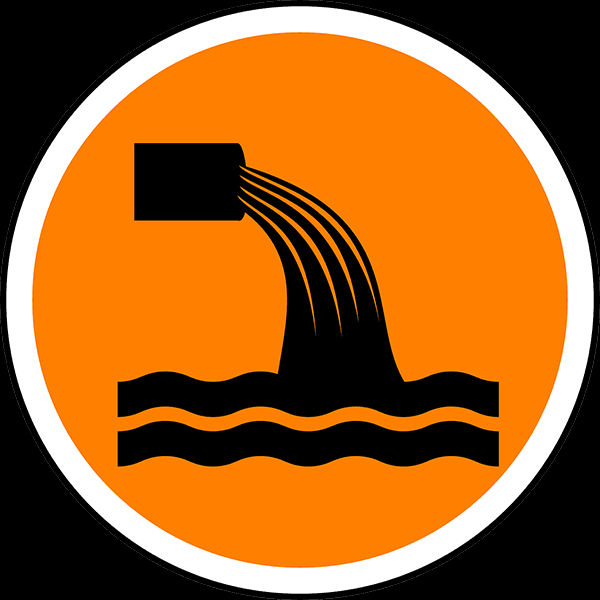The Facts About Reclaim Waste Uncovered
Table of ContentsSome Ideas on Reclaim Waste You Should KnowIndicators on Reclaim Waste You Need To KnowAn Unbiased View of Reclaim WasteThe Greatest Guide To Reclaim WasteThe Best Guide To Reclaim Waste
Explore the kinds, occurrences, and types of fluid waste. Domestic sewage waste describes the waste and products from a household septic container. This kind of waste is developed by people in homes, colleges, and various other structures. This only consists of septic systems that have a drainpipe field. The proper management and disposal of residential sewer waste call for fluid waste to be transferred to a sewer therapy plant where the correct approaches and equipment are put on detoxify and take care of waste.
Industrial waste commonly includes prospective hazards, such as flammable products or a mixture of liquid and strong waste products, and calls for a much more sophisticated and in-depth disposal process. The disposal of industrial waste commonly includes the filtering of waste prior to transportation to guarantee risk-free and correct disposal. Hazardous waste is produced from results and overflow of commercial procedures and manufacturing.
This type of waste can not use the very same sewer management transportation or procedures as septic or business liquids. The hazardous waste management procedure requires the inspection and testing of fluid waste before it undertakes the disposal process (liquid waste disposal). Runoff waste is the liquid waste that originates from drainage and excess stormwater in extremely inhabited areas or cities
Overflow waste can trigger contamination and flooding if not dealt with properly. Ensuring appropriate waste administration can prevent disasters and minimize environmental injury.
The 9-Minute Rule for Reclaim Waste
Contact PROS Solutions today to learn more about our waste administration and disposal services and the appropriate means to care for the fluid waste you generate.
(https://filesharingtalk.com/members/604691-reclaimwaste1)Do you know what occurs to your water when you end, flush the bathroom or drain the washing device? No? Well, it deserves knowing. This so-called 'wastewater' is not just an important source yet, after treatment, will certainly be launched to our land, rivers or the ocean. Made use of water from toilets, showers, baths, cooking area sinks, laundries and industrial processes is understood as wastewater.

water utilized to cool equipment or clean plant and tools). Stormwater, a type of wastewater, is runoff that moves from farming and city areas such as roofing systems, parks, yards, roadways, courses and gutters into stormwater drains pipes, after rainfall. Stormwater streams untreated straight to neighborhood creeks or rivers, eventually reaching the ocean.
All about Reclaim Waste
In Queensland, the majority of wastewater is treated at sewage treatment plants. Wastewater is transported from domestic or commercial websites via a system of sewers and pump terminals, recognized as sewage reticulation, to a sewage therapy plant.
The Department of Natural Resources suggests local federal governments concerning managing, operating and preserving sewerage systems and treatment plants. In unsewered locations, city governments may call for owners to mount individual or family sewage treatment systems to deal with residential wastewater from bathrooms, kitchen areas, restrooms and washings. The Division of Natural Resources authorises making use of family systems when they are confirmed to be efficient.
The majority of stormwater gets no therapy. In some new subdivisions, therapy of some stormwater to eliminate clutter, sand and gravel has begun using gross toxin catches. Wastewater therapy occurs in four stages: Eliminates strong matter. Bigger solids, such as plastics and other things mistakenly released to sewage systems, are eliminated when wastewater is passed with screens.
Wastewater after that flows into large containers where solids resolve and are removed as sludge. Grease and scum are skimmed from the surface. Utilizes little living microorganisms called micro-organisms to damage down and remove continuing to be liquified wastes and great bits. Micro-organisms and wastes are incorporated in the sludge. Eliminates nitrogen and phosphorus nutrients that could create algal flowers in our waterways and intimidate aquatic life.
Reclaim Waste Things To Know Before You Get This
Nutrient elimination is not readily available at all sewer treatment plants since it requires costly specialized tools. Clear fluid effluent created after therapy may still contain disease-causing micro-organisms - liquid waste removal.

This normally indicates wastewater needs to be dealt with or impurities removed prior to it can be released to rivers. Many wastewater flows right into the sewage system. Under the Act, city governments provide approvals and permits for environmentally appropriate activities (ERAs) including wastewater releases that might have a regional influence. The department administers authorizations and licences to ERAs entailing wastewater launches that could have a regional or statewide influence.
The 6-Second Trick For Reclaim Waste
Or else, samples are taken for laboratory analysis. Typically many examinations see this site are needed to establish the degrees of each of the different toxins such as oils, hefty steels and chemicals in water. Surveillance supplies valid information concerning water quality and can validate that licence conditions are being met. The details obtained via monitoring supplies the basis for making water top quality choices.